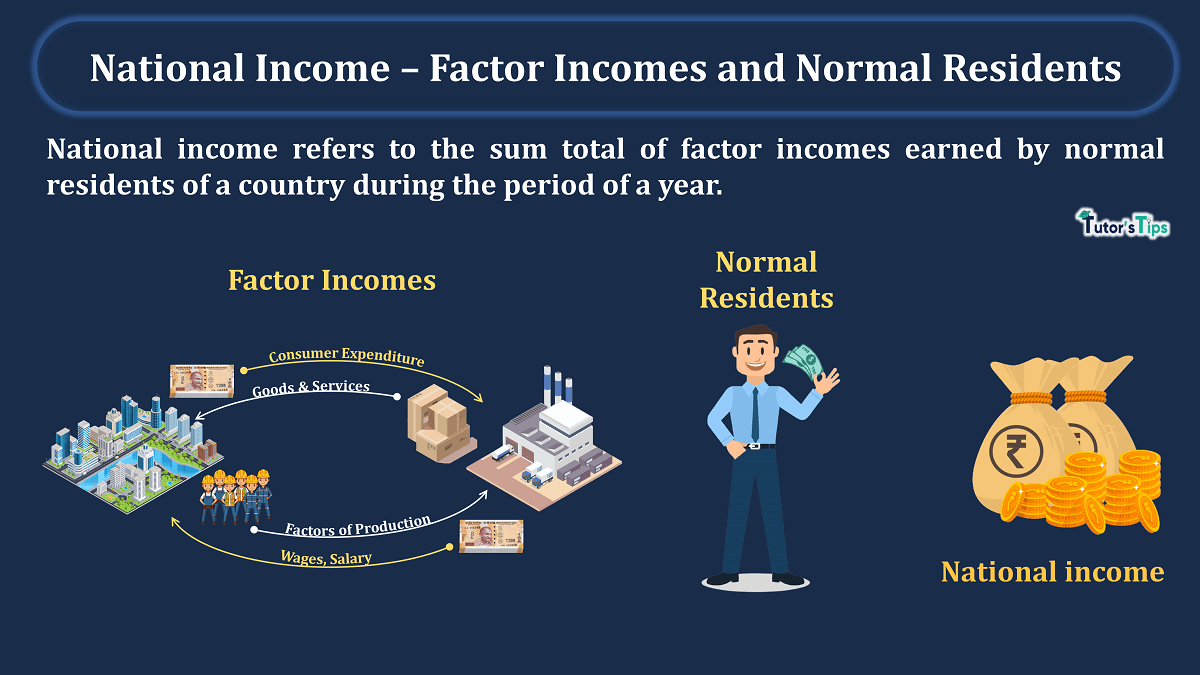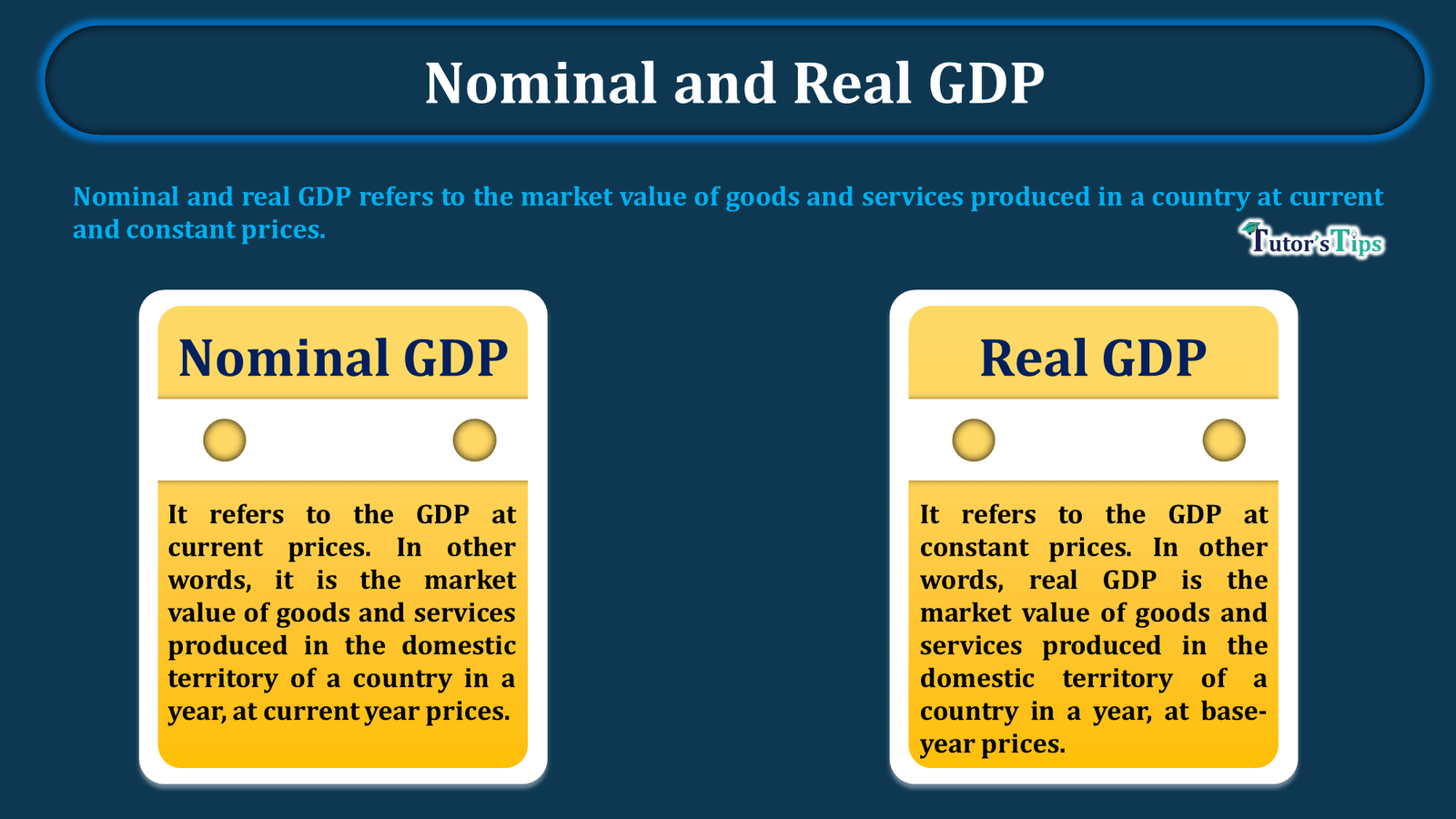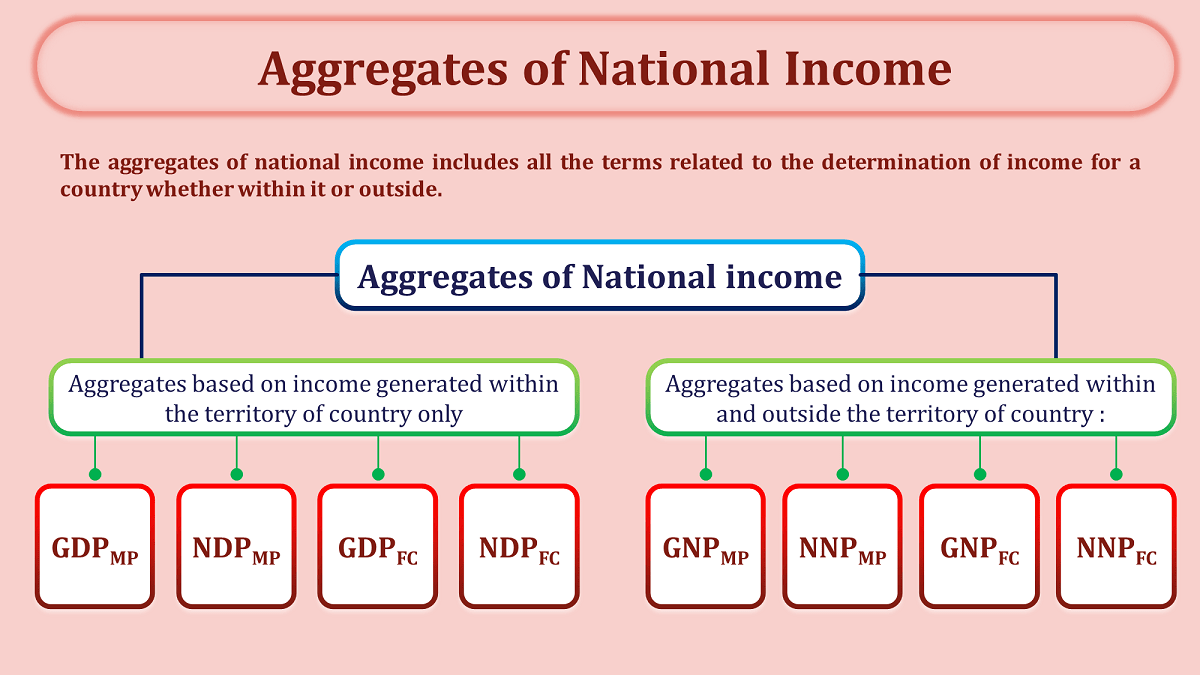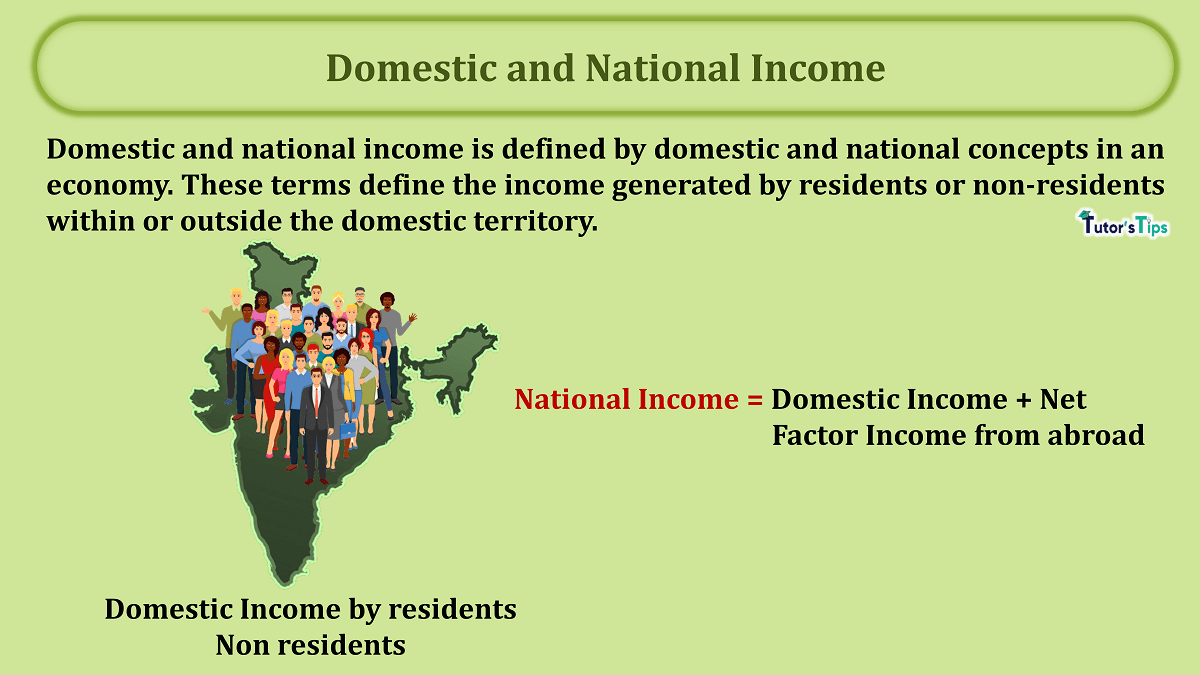Gross and net domestic product are the concepts related to domestic product. These can be regarded as criteria for calculating domestic products in respect of the consumption of fixed capital.
Gross and Net Domestic Product:
Depreciation or consumption of fixed capital causes the difference between the gross and net domestic product concepts. In other words, GDP includes depreciation. But, NDP doesn’t include.
Gross Domestic Product:
It is the market value of the final goods and services produced within the domestic territory f the country during a specific period of time i.e. a year, inclusive of depreciation.
Thus,
GDP = Net domestic product(NDP) + Depreciation
Net domestic product:
It is the market value of the final goods and services produced within the domestic territory of the country during an accounting year, exclusive of depreciation.
Thus,
NDP = Gross Domestic Product(GDP) – Depreciation
The same concept is used in the case of the net and gross national product. Therefore,
Gross national product(GNP) = Net national product(NNP) + Depreciation
Advertisement-X
Net National Product(NNP) = Gross national product(GNP) – Depreciation
Domestic product at market price and factor cost:
Domestic product at market price and factor costs are identical in the economy. Provided there is no government and there are no taxes and subsidies related to the production of goods and services.
In other words, there is no difference between these two concepts as long as we are considering a two-sector economy having household and producer sectors. Let us consider an example to understand these concepts.
Example:
Suppose, in a two-sector economy, the producing sector takes the services from the household sector in form of factors of production. After the production, the producing sector sells the production of two products, say, X and Y for Rs. 1,00,000. Also, there are no taxes or subsidies on production due to the absence of the government sector. Let us assume the producing sector pay Rs.20,000 for the raw material so that they can earn Rs.80,000 revenue i.e. (1,00,000-20,000). This revenue amount i.e. Rs.80,000 is called domestic product at market price. Simply, because this is estimated at market price.
But, the firms have to pay those who have contributed to this production. Obviously, this includes payment against land, labor, capital, and entrepreneurship. Thus, this 80,000 would be distributed as rent for land, interest for capital, wages for labor, and profit for entrepreneurship. When this amount is distributed among factors of production, these are regarded as factor costs from the viewpoint of producers.
Thus, domestic products at market price and factor cost are the same. Provided that there is no government and no taxes and subsidies related to the production of goods and services. Accordingly, these two concepts become different aggregates when taxes and subsidies are introduced in the market.
Introduction of Government:
When the government sector gets involved in it, the taxes and subsidies come into the picture. And, both these concepts become different. Simply, because the subsidies lower the market price of the goods. Accordingly, domestic products at market price deflated. Likewise, the taxes on the goods raise the market price of the goods. As a result, the domestic price at market price increases.
To eliminate the parity between these two terms,
- We deduct the indirect taxes from a domestic product at market price, and
- add the value of subsidies to the domestic product at market price.
In other words,
Domestic product at factor cost = domestic product at market price + Indirect taxes – subsidies.
Advertisement-X
Also, Net indirect taxes = Indirect taxes – subsidies
Therefore,
Domestic product at factor cost = domestic product at market price – Net indirect taxes.
The same concept is used in the case of the net and gross national product. Therefore,
National Product at market price – Net indirect taxes = national product at factor cost.
National product at factor cost + Net indirect taxes = National Product at market price.
Thanks, and please share with your friends.
Comment if you have any questions.
References:
Introductory Microeconomics – Class 11 – CBSE (2020-21)
Advertisement-X










1 Comment